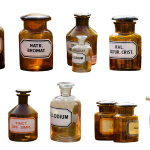When it comes to stepping into the world of meteorology, a well-crafted CV is your ticket to making a lasting impression. The intricacies of weather forecasting and atmospheric science demand not just technical skills but also the ability to communicate effectively, making your resume a crucial tool in showcasing your unique qualifications.
1. Personal Information
At the very top of your CV, sprinkle in your personal details—your name, contact number, and email address should gleam like the sun breaking through clouds. Don’t forget to include your LinkedIn profile or a personal website if you’ve got one; it’s all about giving potential employers a glimpse into your professional persona.
2. Professional Summary
This is your moment to shine, where you encapsulate your experience and passion for meteorology in a few compelling sentences. Think of it as a weather report for your career—concise yet informative. Highlight your years of experience, core competencies, and key achievements. For instance, you might mention your expertise in predictive modelling or your success in presenting complex meteorological data to diverse audiences.
3. Relevant Experience
Here lies the heart of your CV. Detail your past roles, emphasising responsibilities and achievements that align with the meteorology field. Use bullet points to break up information, allowing it to flow seamlessly. For instance:
- Conducted extensive research on climate patterns, resulting in a published paper in a peer-reviewed journal.
- Developed and implemented weather forecasting models that improved accuracy by 15%.
Make sure to tailor this section to each job application, highlighting experiences that are particularly relevant to the role in question.
4. Education and Qualifications
In the world of meteorology, your educational background is pivotal. List your degrees in chronological order, including the institution’s name and the dates attended. If you’ve acquired any certifications—such as the Certified Broadcast Meteorologist (CBM) designation—make sure they are front and centre. Perhaps you completed a particularly relevant module on climate change or atmospheric dynamics; don’t shy away from mentioning it!
5. Skills
Here, you can showcase your technical prowess. Your skills section should encompass both hard and soft skills. Proficiency in data analysis software, such as MATLAB or Python, is essential, as is the ability to communicate findings effectively. Consider incorporating some of the following:
- Advanced statistical analysis
- Remote sensing technology
- Public speaking and presentation skills
- Team collaboration
6. Additional Sections
Depending on your experience, there are several other sections you might consider. Publications, conferences attended, or even volunteer work related to environmental awareness can add depth to your CV. Each of these elements paints a fuller picture of who you are as a meteorologist and reinforces your dedication to the field.
Crafting Your Narrative
Remember, your CV is not merely a list of qualifications; it’s a narrative that weaves together your professional journey. Ensure that it flows well, with each section leading naturally to the next. Use action verbs and keep the language vibrant to engage the reader. A well-structured, dynamic CV not only highlights your skills but also reflects your personality.
In the ever-evolving field of meteorology, staying ahead means continuously adapting your CV. Embrace this as a living document—regularly update it with new experiences and achievements.
As you embark on this journey, keep in mind that CVPortal is here to provide you with a wealth of high-quality resume templates and examples tailored to your profession. So, equip yourself with the best tools and watch the skies clear for your career in meteorology!


